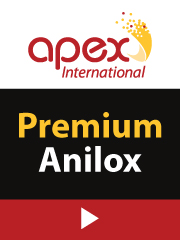Kodak and Xymox Report Agreement on Conductive Films
- Published: November 12, 2013
ROCHESTER, NY | Kodak and Xymox Technologies, Milwaukee, WI, have entered into a multi-year agreement to jointly promote Kodak’s Highly Conductive Films (HCF), the featured product in multi-touch sensor technology developed by Xymox. The agreement further states that Kodak on a non-exclusive basis will promote Xymox as a preferred source for industrial sensors made using HCF Films. Additional terms of the agreement were not disclosed.
Xymox’s new multi-touch sensor technology will incorporate HCF Film in a variety of industrial sensors, with potential use in cars, home appliances, tooling and machine equipment, product packaging, signs, and other interactive displays.
“The technology that utilizes Kodak’s HCF Film represents a milestone for Xymox in the scaling up and commercial roll-out of our projected capacitive sensor to meet the quality and price targets of our printed electronics customers,” says Bob Heidenrich, Xymox VP of sales and marketing. “Kodak’s unparalleled expertise and core competencies in materials science, deposition technologies and large-scale manufacturing allow us to integrate HCF Film in the design and manufacture of custom projected capacitive sensors for an array of industrial applications.”
Edward Hurley, general manager for Kodak’s Industrial Materials Group, says the agreement is evidence that Kodak is innovating in the functional print markets by leveraging a range of technologies and experience via collaboration with partners to deliver multiple solutions for the touch sensor markets. “With this agreement, Kodak continues to execute on our strategy of developing a portfolio of flexible film offerings in answer to the growing market need for alternative touch sensor solutions.”
Xymox’s projected capacitive sensor features Kodak HCF Film, a transparent, polyester film with PEDOT/PSS, a conductive coating on each side, said to save on both thickness and cost. A transparent pattern is produced when the conductivity of the film is deactivated to produce the customer’s desired pattern. Xymox can laminate the sensor onto acrylic or glass for integration with the capacitive touch controller, and the results are reported to be a completed touch sensor where the pattern is not visible to the naked eye.
“Kodak HCF Films are a key element of that process,” says Hurley, adding that the films “provide high transparency and conductivity with low haze and neutral color, and come with a feature set that meets the design specifications of sensors for a variety of industrial applications.”












